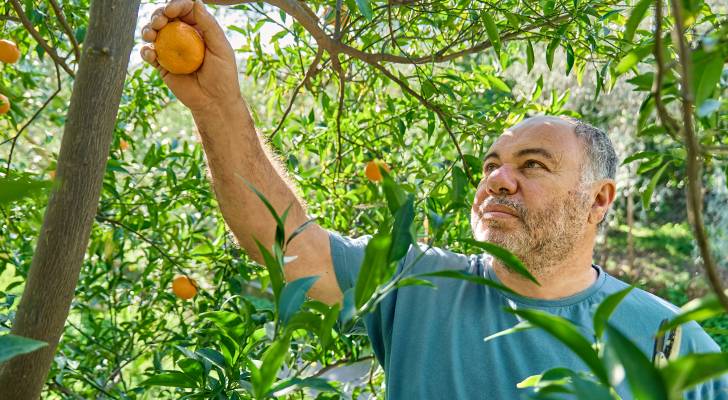
If there’s one agricultural staple Florida is known for, it’s oranges.
Polk County, Florida, houses more acres of citrus than any other county in Florida. But in 2023, more people moved to Polk County than any other county in the country, leaving less room for citrus growers to do what they do best.
Don’t miss
- I’m 49 years old and have nothing saved for retirement — what should I do? Don’t panic. Here are 5 of the easiest ways you can catch up (and fast)
- Thanks to Jeff Bezos, you can now become a landlord for as little as $100 — and no, you don’t have to deal with tenants or fix freezers. Here’s how
- Gain potential quarterly income through this $1B private real estate fund — even if you’re not a millionaire. Here’s how to get started with as little as $10
However, the problem isn’t limited to Polk County. The combination of population growth, extreme weather and citrus greening disease have battered the Florida orange industry. Many citrus growers across the state are shutting down operations and making the tough decision to sell groves that have been in their families for generations.
And not just farmers and businesses reliant on oranges stand to lose. If this trend continues, consumers could also feel the impact.
A dire situation
Citrus greening disease, also known as Huanglongbing (HLB), has been devastating Florida citrus crops since it was first detected in 2005. It has ripped through the state, reducing citrus production by 75% and more than doubling production costs.
Florida’s citrus industry was already in poor shape when Hurricane Irma hit in 2017. In its aftermath, a major freeze followed, along with additional hurricanes that further exacerbated the situation. A tree that loses branches and foliage in a hurricane can take up to three years to recover.
All told, these events have contributed to a 90% decline in Florida’s orange production over the past two decades. The state’s citrus industry footprint has also shrunk from 832,000 acres to just 275,000.
“This industry is … so ingrained in Florida. Citrus is synonymous with Florida,” said Matt Joyner, CEO of trade association Florida Citrus Mutual.
Alico Inc., one of Florida’s biggest growers, announced plans this year to wind down its citrus operations across 53,000 acres. That decision has ripple effects for producers like Tropicana, which rely on Alico to produce orange juice. Meanwhile, U.S. orange juice consumption has also been declining for two decades.
But natural disasters aren’t the only challenge. Booming real estate is also taking a toll.
Florida’s population increased by more than 467,000 people last year, reaching 23 million and making it the third-largest state in the nation. But more people mean more homes — homes that encroach on orange groves.
The good news is that researchers are developing a genetically modified tree that can kill the tiny insects responsible for citrus greening. However, those trees are still at least three years away from being planted.
Read more: Want an extra $1,300,000 when you retire? Dave Ramsey says this 7-step plan ‘works every single time’ to kill debt, get rich in America — and that ‘anyone’ can do it
Could your grocery bills be affected?
The cost of orange juice has been rising steadily since the pandemic, with prices soaring in 2023 and 2024. In March 2020, a 12-ounce can of frozen orange juice concentrate cost $2.28. By February 2025, the price had jumped to $4.49.
The reason is simple: supply and demand. When supply dwindles, prices rise. If Florida’s citrus output continues to shrink, consumers may have to pay even more for orange juice and related products.
But that’s problematic. According to the Consumer Price Index, grocery prices were up 1.9% year over year as of February 2025, and many Americans are struggling to keep up.
Rampant inflation has been hurting consumers for years. A Swiftly survey in October found that 70% of consumers were having difficulty affording groceries. Meanwhile, Northwestern Mutual’s 2025 Planning & Progress Study found that 43% of respondents cited rising grocery prices as a significant financial burden.
If U.S. citrus production continues to decline, the country may need to rely more on imports. However, recent tariff policies and international trade tensions could drive prices even higher.
There’s also the issue of job losses. As of 2021, Florida’s citrus industry contributed $7 billion to the state’s economy and supported more than 32,000 jobs.
If citrus production continues to decline, many workers — especially those with long histories in agriculture — could find themselves unemployed. Whether they’ll be able to pivot successfully into new industries is unclear.
What to read next
- Don’t have the cash to pay Uncle Sam in 2025? You may already be eligible for a ‘streamlined’ handshake with the IRS — here’s how it works and how it can potentially save you thousands
- Here are 5 ‘must have’ items that Americans (almost) always overpay for — and very quickly regret. How many are hurting you?
- Robert Kiyosaki warns of a ‘Greater Depression’ coming to the US — with millions of Americans going poor. But he says these 2 ‘easy-money’ assets will bring in great wealth. How to get in now
This article provides information only and should not be construed as advice. It is provided without warranty of any kind.